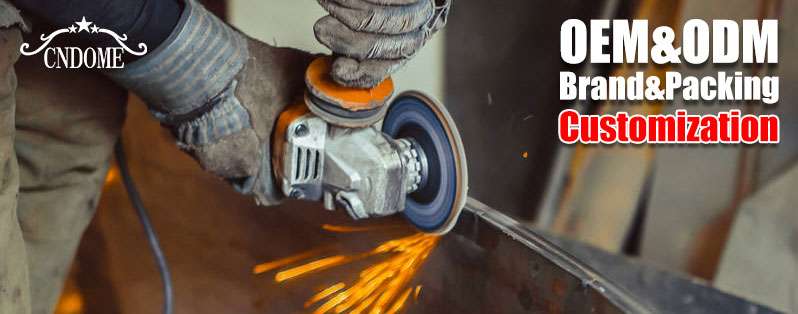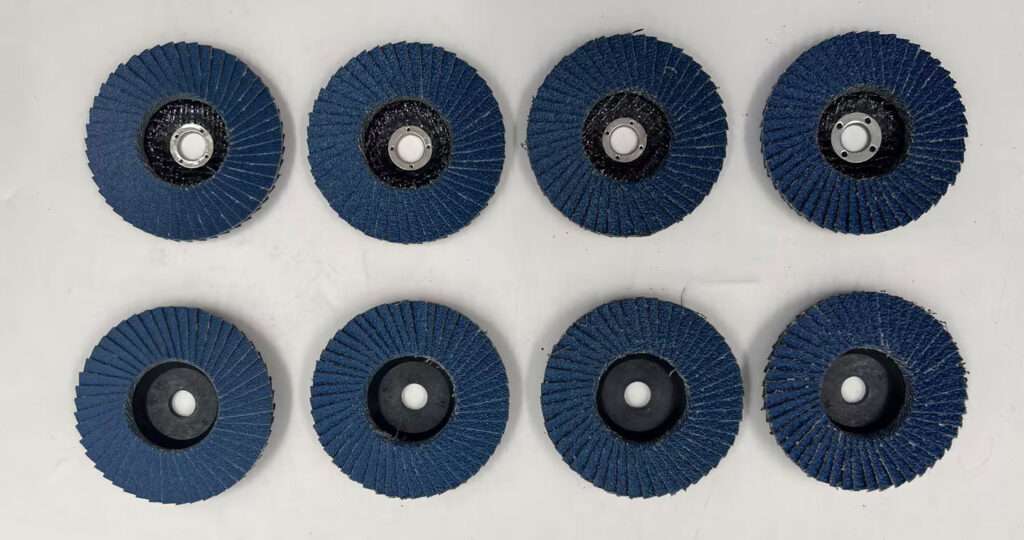When it comes to metalworking, having the right tool is essential for achieving optimal results. Two common tools in this field are the flap disc and the grinding disc. While they may appear similar at first glance, each has unique features and applications that make them suitable for different tasks. This blog post will explore the differences between flap discs and grinding discs, helping you determine which is best for your needs.
Understanding Flap Discs
What is a Flap Disc?
A flap disc is a versatile abrasive tool consisting of overlapping pieces of sandpaper (flaps) attached to a central hub. These flaps are typically made of aluminum oxide, zirconia alumina, or ceramic. The design allows for continuous exposure of fresh abrasive material, providing consistent performance and a smooth finish.
Applications of Flap Discs
- Surface Finishing: Flap discs are excellent for finishing work, as they provide a smoother finish than grinding discs.
- Deburring and Rust Removal: Ideal for removing burrs and rust from metal surfaces.
- Blending and Smoothing: Perfect for blending weld seams and smoothing rough edges.
Advantages of Flap Discs
- Versatility: Suitable for a variety of tasks including grinding, blending, and finishing.
- Longer Lifespan: As the flaps wear down, new abrasive material is exposed, extending the disc’s life.
- Smooth Finish: Provides a smoother and more polished finish compared to grinding discs.
Understanding Grinding Discs
What is a Grinding Disc?
A grinding disc, also known as a grinding wheel, is a rigid abrasive tool made from bonded abrasive grains. These discs come in various materials such as aluminum oxide, silicon carbide, and diamond. Grinding discs are designed for aggressive material removal and are used with angle grinders and other grinding machines.
Applications of Grinding Discs
- Material Removal: Ideal for removing large amounts of material quickly.
- Shaping and Smoothing: Used for shaping metal parts and smoothing rough edges.
- Weld Cleaning: Effective for cleaning and preparing weld seams.
Advantages of Grinding Discs
- Aggressive Cutting: Provides fast material removal, making it ideal for heavy-duty tasks.
- Durability: Built to withstand high pressure and prolonged use.
- Precision: Allows for precise shaping and smoothing of metal parts.
Comparing Flap Discs and Grinding Discs
Performance and Finish
- Flap Discs: Offer a finer, smoother finish, making them ideal for finishing work and delicate tasks.
- Grinding Discs: Provide aggressive material removal but can leave a rougher surface.
Versatility
- Flap Discs: More versatile, suitable for a range of tasks from grinding to finishing.
- Grinding Discs: Best suited for heavy-duty grinding and shaping.
Durability and Lifespan
- Flap Discs: Have a longer lifespan due to the continuous exposure of fresh abrasive material.
- Grinding Discs: While durable, they can wear down more quickly under heavy use.
Cost
- Flap Discs: Generally more expensive due to their versatility and longer lifespan.
- Grinding Discs: Typically less expensive but may need to be replaced more frequently for certain tasks.
Choosing the Right Disc for Your Project
When deciding between a flap disc and a grinding disc, consider the following factors:
- Task Requirements: For aggressive material removal and heavy-duty tasks, a grinding disc is the best choice. For finishing, blending, and smoother surfaces, opt for a flap disc.
- Surface Finish: If the quality of the surface finish is a priority, choose a flap disc.
- Cost Efficiency: Consider the overall cost, including the potential need for multiple replacements with grinding discs versus the longer lifespan of flap discs.
Conclusion
Both flap discs and grinding discs are invaluable tools in metalworking, each with its specific strengths and applications. Understanding the differences and appropriate uses for each can significantly impact the efficiency and quality of your work. By selecting the right disc for your project, you can ensure optimal results and enhance your overall productivity.




